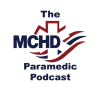With the increasing number of novel coronavirus (2019 nCoV) cases both in China and across the world, it’s time for us to consider the impact and management of this disease from an EMS perspective. At the time of publication, there are currently 5 known cases of 2019 nCoV identified in the U.S., so it is not time to panic or for hysteria. It is, however, time for education and preparation. This is also a great time to review and update your department’s procedures to address all types of highly infectious and contagious diseases.
What is a coronavirus? 2019 nCoV is a specific coronavirus that causes respiratory illness similar to influenza. In fact, about 20% of the normal common cold is caused by various coronaviruses. Past respiratory illness outbreaks such as Severe Acute Respiratory Syndrome (SARS) and Middle East Respiratory Syndrome (MERS) have also been a result of coronavirus infections.
How is the 2019 nCoV spread? The 2019 nCoV is thought to be spread by respiratory droplet transmission and/or contact with infected patients, so PPE consists of gloves, eye protection and an N-95 mask for the EMS provider. It is also advised to place a surgical mask on any prospective infected patient if they tolerate this clinically.
Where did this 2019 nCoV start and how bad is it? The 2019 nCoV started in late December in Wuhan, China – a city in central China with more than 11 million people. It has since spread to southeast Asia, Europe, Canada and the U.S. The current mortality is believed to be approximately 3% with older adults being affected most frequently. There have been over 100 deaths and over 4,000 cases reported worldwide.
What are we doing to protect the public in the U.S. currently? Identification, quarantine and contact tracing are the key steps in the initial management of any outbreak. We are currently screening passengers returning to the U.S. from Wuhan, China in multiple U.S. airports. In the U.S., all infected individuals are currently quarantined with no known cases of secondary transmission (all infected individuals contracted the disease in Wuhan). Additionally, all travel from Wuhan has been shut down by the Chinese government in attempt to decrease spread.
What specific actions should a medic take if they are concerned that a patient may be at risk for 2019 nCoV? First of all, these will likely present like any other upper respiratory viral illnesses ranging from mild cough and aches to sepsis and respiratory failure. Therefore, don’t forget the ABCs and basic management of respiratory pathology. Three additional steps are necessary if you are concerned about 2019 nCoV:
- First, ask if the patient has been to Wuhan, China, or been in contact with anyone who has.
- If the answer is “no,” then, as of now, the risk is quite low for 2019 nCoV. However, if the patient answers “yes” or you are still concerned, then apply an N-95 to yourself (along with eye protection and gloves) and a surgical mask to the patient if tolerated.
- Finally, alert your receiving emergency department as soon as possible to facilitate isolation placement upon arrival.
Please see www.CDC.gov for additional information and check out The MCHD Paramedic Podcast below.













